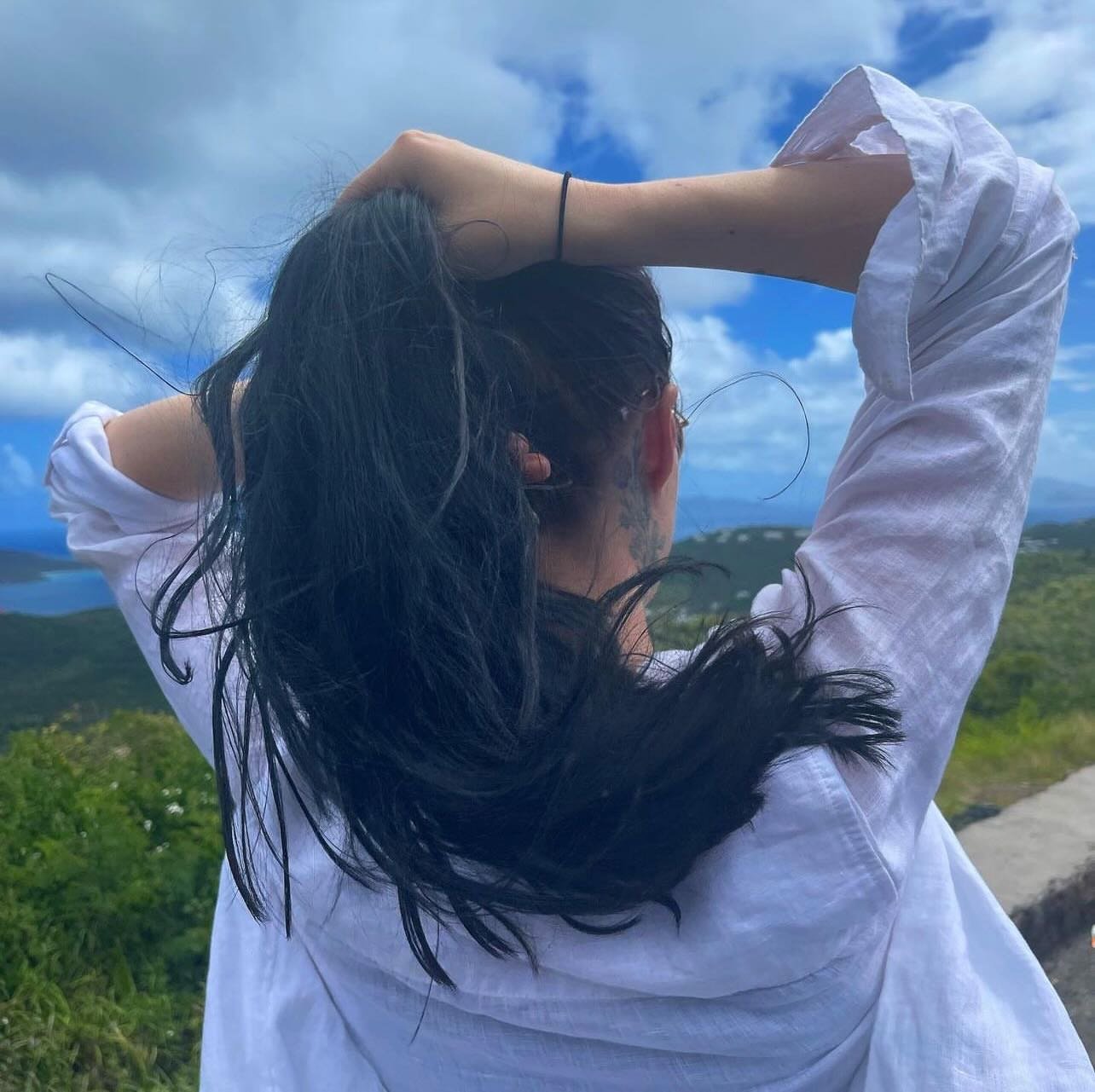[This article contains information on medicinal herbalism, read our Medical Disclaimer here.]
Most of us have dyed our hair at some point, and depending on the type of dye used, it can cause a lot of damage to our hair. Leaving our locks dry and prone to breakage.
Henna and indigo are safe and effective alternatives to chemical hair dyes. Indigo (Indigofera tinctoria) and henna (Lawsonia inermis) have strong pigments that stain the hair permanently. Henna has red and brown tones while indigo has black and blue tones. They can be used alone or together to create a wide range of hair colors. They are a non-toxic, and non-damaging way to color hair.
Me showing off the black/black color of the indigo
My Experience
I used chemical dyes on my hair for a solid 8 years when I spontaneously developed an allergy to them. I had been using the same black box dye for almost a year when after one of my routine dyes, my face broke out in an itchy, red rash. In the true spirit of the scientist that I am (but of course not with a protocol that I would ever recommend) I tested another box dye. I was convinced that maybe the first brand had changed its formula and that I simply wasn't compatible with it. The next time my roots needed a touch-up, I applied the dye, and again broke out in a very uncomfortable rash.
I had no choice but to ditch the chemical dye options available to me and find another way to color my hair. I knew that henna dye existed, and after a little research, I decided upon using a blend of henna and indigo to color my hair black.
Well, sometimes the best things in life happen by mistake because I accidentally bought only indigo powder. Henna has red and brown pigments, whereas indigo has blue and black pigments. Together, they make a pure black, but I wasn't sure what the outcome would be using indigo alone.
I used pure indigo anyway and checked the color halfway through the 4-hour dyeing process. Because the herbal dye takes at least 4 hours to fully deposit the pigments into the hair shaft, my naturally blonde hair was green! I figured that I was already in too deep at that point and kept the dye on for the remainder of the time needed. When I washed my hair out later, the color was so much better than I expected it would be! Indigo alone creates a blue/purple/black color that resembles an oil spill. It's such a stunning and unique shade that I've never seen replicated with a chemical dye.
Safety Disclaimer
Watch out for herbal dyes that contain metallic salts. If you decide to use a chemical dye after using a dye with metallic salts in it, a chemical reaction may occur that will literally cause your hair to smoke and burst into flames.
You can avoid this by buying a whole herb powder where the only ingredient listed is the botanical name of the plant.
This is the brand of pure indigo powder that I use to dye my hair.
Scent Disclaimer
Indigo has a very strong and unique smell- it's a mix of dirt, wet dogs, and a grimy public bathroom. I wish I was joking. I absolutely hate the smell, but I love the color so I deal with it. I've had partners who have had to be around me when I dye my hair and they haven't minded the smell. So maybe it won't bother you at all. However, if you are particularly sensitive to scents, indigo may not be the herbal hair dye for you.
How to Mix and Apply Herbal Hair Dye:
Step 1) Mix 3/4 cup of dry herb for the roots + more depending on how long your hair is. Mix with ½ cup of lukewarm water until it is a smooth paste. Be careful not to add too much water because the mixture must be easily applied thick enough to stay in place on the head and a thin solution will dilute the color. Apply onto dry or damp hair, but not wet. This will dilute the dye.
Step 2) Wrap the head in a plastic cover. There are hair bonnets and hair dye covers sold at beauty supply stores, but Saran wrap also works.
Step 3) Leave on the hair for at least 4 hours. Otherwise, the hair will not have absorbed the full spectrum of color the dye has to offer. To avoid this, sometimes I leave the dye on overnight. There are no negative consequences for leaving the dye on longer than necessary. If you do decide to lay down with the dye in, do your pillow a favor and put 1 or two towels down to absorb any dye that may leak out.
Step 4) Rinse out until the water runs clear. For best results, do not shampoo the hair for an additional 24-48 hours. The pigments within the indigo look best when they have over 24 hours to develop, and shampooing too early will result in lighter hair color.
I also use this dye on my eyebrows and eyelashes. The best method is to apply with a Q-tip and use small strokes to apply layers of dye onto the lashes. Leave on for 4 hours and gently rinse out with lukewarm water.
Sincerely,
Emilee Wright
A Mercurial Consciousness


